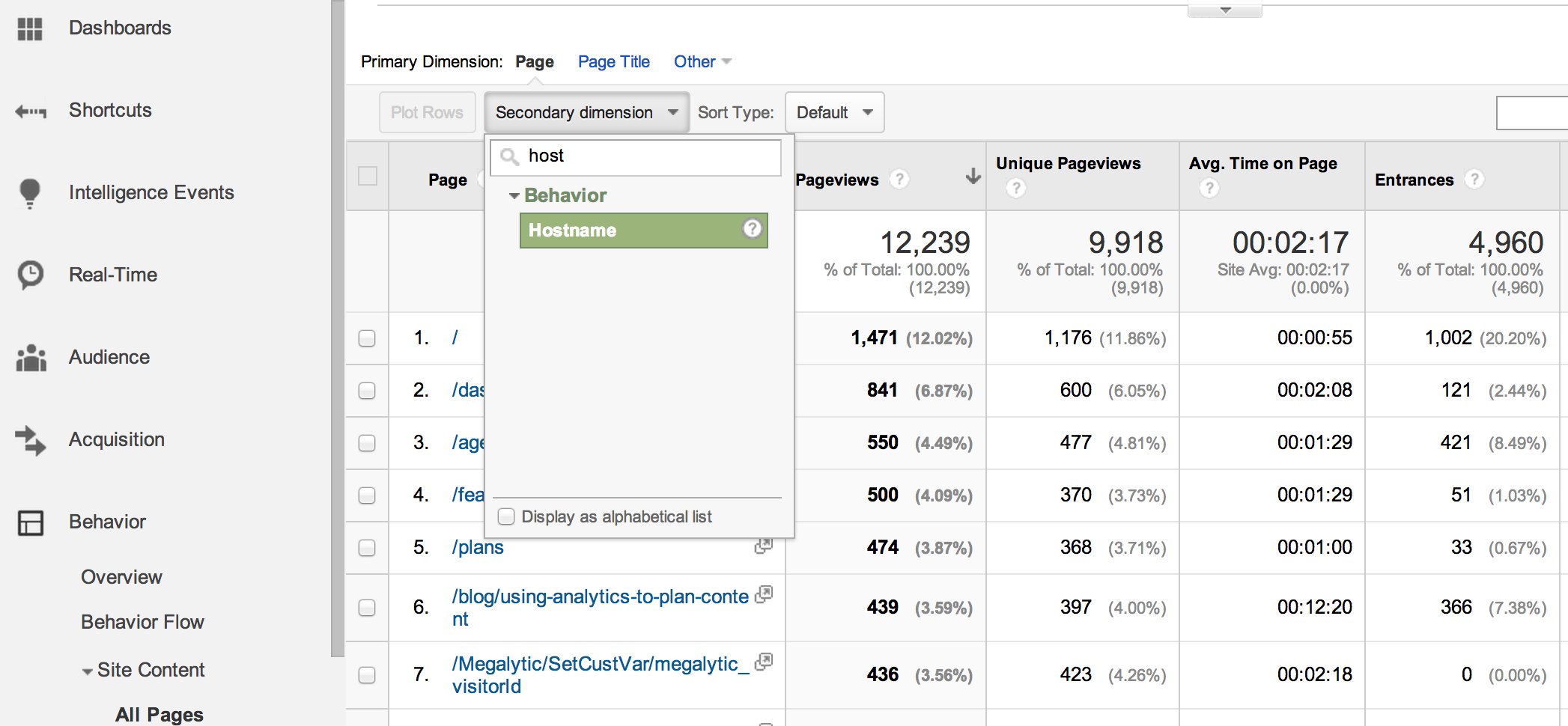Demystifying Additional Measurement in Google Analytics: The Secret to Comprehending Your Information Like Never Ever Before
In the world of digital analytics, the capacity to extract purposeful insights from information is vital for notified decision-making. Among the wide variety of tools available, Google Analytics stands out as a giant, yet numerous individuals continue to be uninformed of the untapped prospective lying within its Second Dimension function. By peeling off back the layers of intricacy surrounding this tool, an entire brand-new globe of data analysis and evaluation unveils itself. Understanding the nuances of Additional Measurement might be the missing out on piece in your analytics puzzle, shedding light on trends and correlations that were formerly covered.
Comprehending the Fundamentals of Second Dimension
Additional measurements in Google Analytics act as supplementary qualities that provide deeper understandings right into primary information metrics, enhancing the general understanding of user behavior and interactions on a website. By adding secondary measurements to your primary data metrics, you can section and analyze your data additionally, revealing important information that might have been concealed or else.
Understanding the essentials of secondary dimensions is crucial for enhancing your internet site's efficiency and user experience. what is a “secondary dimension” in google analytics?. When utilizing secondary dimensions, it is important to know that they can be included in numerous records in Google Analytics, enabling you to discover added aspects of your information past the basic dimensions
Furthermore, secondary measurements allow you to contrast and contrast various data points, aiding you identify patterns, trends, and connections that can inform your advertising strategies and website optimizations. Whether evaluating web traffic resources, customer demographics, or actions on certain pages, additional dimensions play a critical duty in drawing out significant insights from your Google Analytics information.
Applying Secondary Measurement in Reports
To grow the analysis of individual behavior and communications on a website, integrating secondary dimensions into reports in Google Analytics provides an extra detailed understanding of data metrics. By using second dimensions in reports, analysts can reveal valuable understandings that go beyond the surface-level information provided by key dimensions alone. This function enables customers to sector and drill down right into their data further, disclosing relationships and patterns that may have or else gone undetected.
With the application of additional measurements, customers can obtain a deeper understanding of the context bordering their main information factors. Integrating the main dimension of 'source/medium' with an additional measurement like 'landing web page' can reveal which specific landing web pages are driving web traffic from different resources. This level of granularity can assist online marketers customize their strategies to maximize efficiency based on these detailed insights.
Analyzing Information With Second Dimension
Utilizing additional dimensions in information evaluation enhances the depth of understandings stemmed from Google Analytics records. By adding a secondary measurement to your main data sets, you can reveal useful relationships and patterns that might or else continue to be undetected. This extra layer of information enables even more nuanced analyses of individual behavior, traffic sources, and other crucial metrics.
When examining data with secondary measurements, it is critical to concentrate on relevant mixes that align with your details objectives. Pairing the key dimension of 'touchdown web pages' with an additional measurement like 'gadget category' can disclose just how various devices impact the performance of numerous touchdown web pages. This type of evaluation can result in actionable insights, such as enhancing web page designs for certain gadgets to enhance total user experience and conversion prices.
Additionally, leveraging second measurements allows you to segment and compare data a lot more efficiently, supplying a detailed view of your internet site's efficiency from different angles. This multifaceted technique to information analysis encourages companies to make enlightened choices and tailor their techniques for maximum impact.

Advanced Techniques With Secondary Dimension
One innovative strategy entails utilizing secondary dimensions to sector information additionally, allowing a more granular evaluation of individual actions. Combining the key measurement of 'Source/Medium' with the additional dimension of 'Gadget Group' can reveal how various gadgets contribute to traffic from numerous resources.
In addition, using secondary dimensions combined with filters permits even more specific data adjustment. Filtering system data by details requirements and then including second measurements can provide a more clear photo of customer communications based on various characteristics. This approach is particularly useful for identifying patterns or anomalies within fractional data sets.
Additionally, making use of second dimensions in custom reports or control panels can improve the evaluation process and promote the monitoring of key performance indications throughout various measurements. By customizing records with second measurements, analysts can concentrate on certain metrics customized to their one-of-a-kind logical needs, improving the overall information analysis and decision-making procedure.
Enhancing Information Analysis With Second Measurement
Enhancing data analysis with secondary measurements in Google Analytics gives a deeper understanding of customer actions and insights into crucial efficiency metrics. what is a “secondary dimension” in google analytics?. By utilizing secondary dimensions, experts can sector and filter their information to uncover useful patterns and patterns that might not be right away evident when checking out the data in its key form. This improved degree of granularity permits a more comprehensive analysis of user communications on a web site or application
Secondary measurements see this here can be especially helpful in separating specific variables that may influence customer habits, such as the resource go to website of website traffic, gadget kind, or geographical place. By layering these additional measurements onto main information collections, experts can gain a more nuanced perspective on just how various elements influence customer interaction and conversion rates.
Conclusion
Finally, using the secondary dimension attribute in Google Analytics gives a deeper level of insight into website information by permitting individuals to examine information from several point of views. By applying secondary measurements in records, assessing data, and using advanced methods, users can enhance their information interpretation and make more educated choices for their websites - what is a “secondary dimension” in google analytics?. Recognizing and leveraging second dimensions is vital for getting a detailed understanding of site efficiency and user behavior

In final thought, making use of the second measurement function in Google Analytics gives a deeper degree of insight into web site information by permitting users to analyze data from several viewpoints.